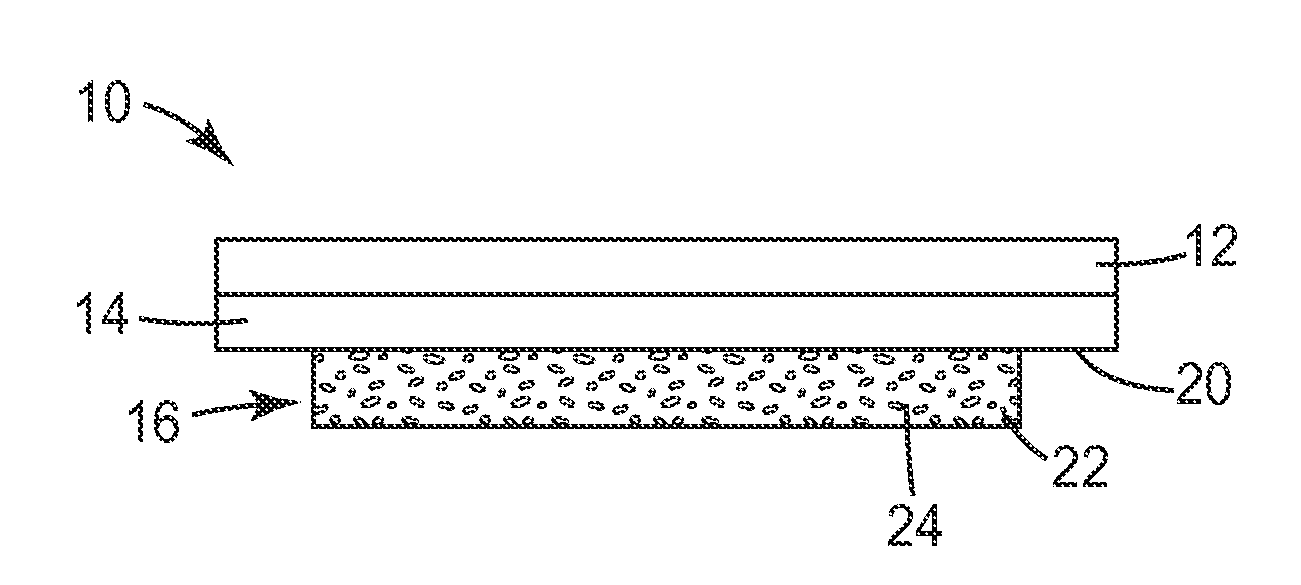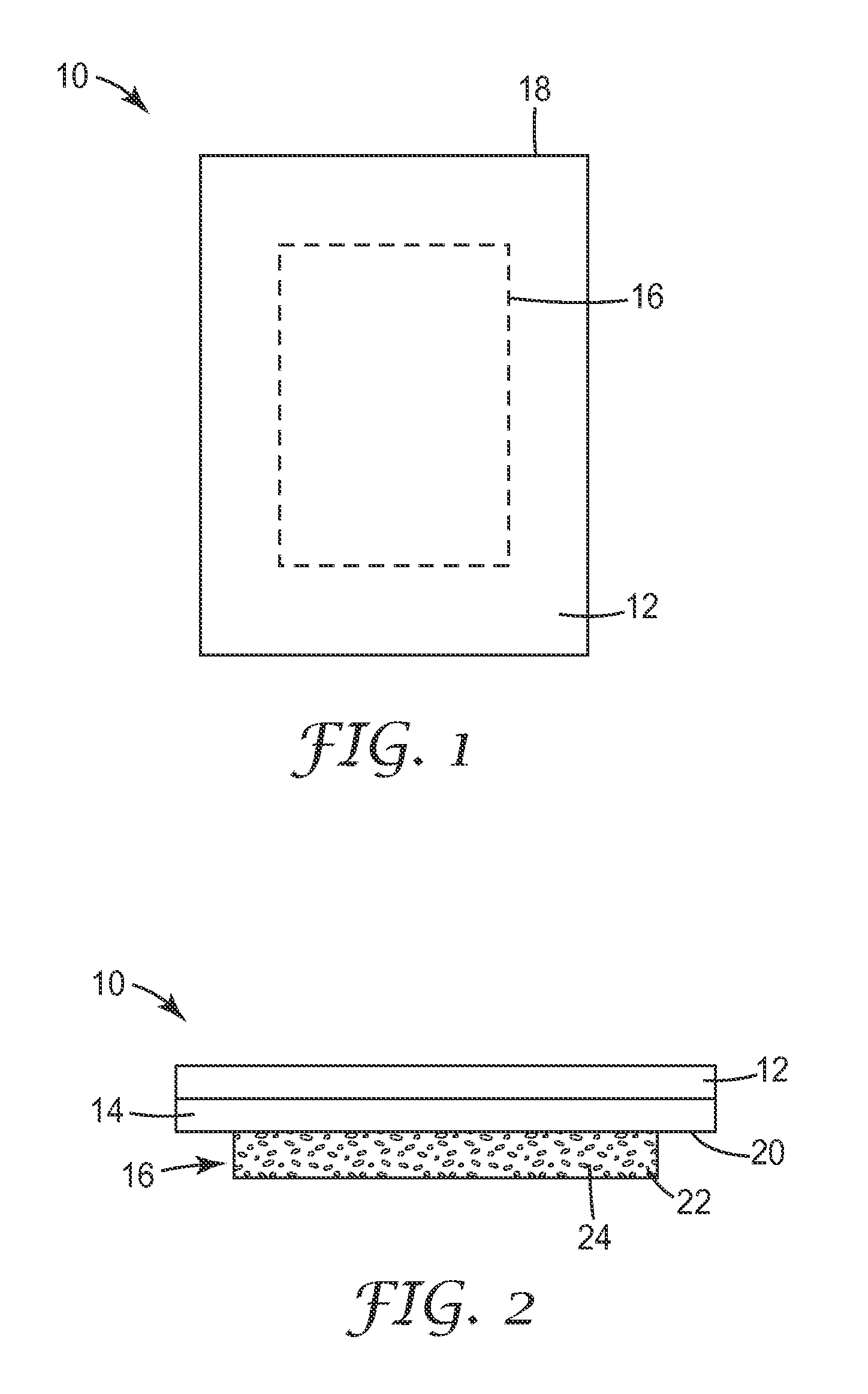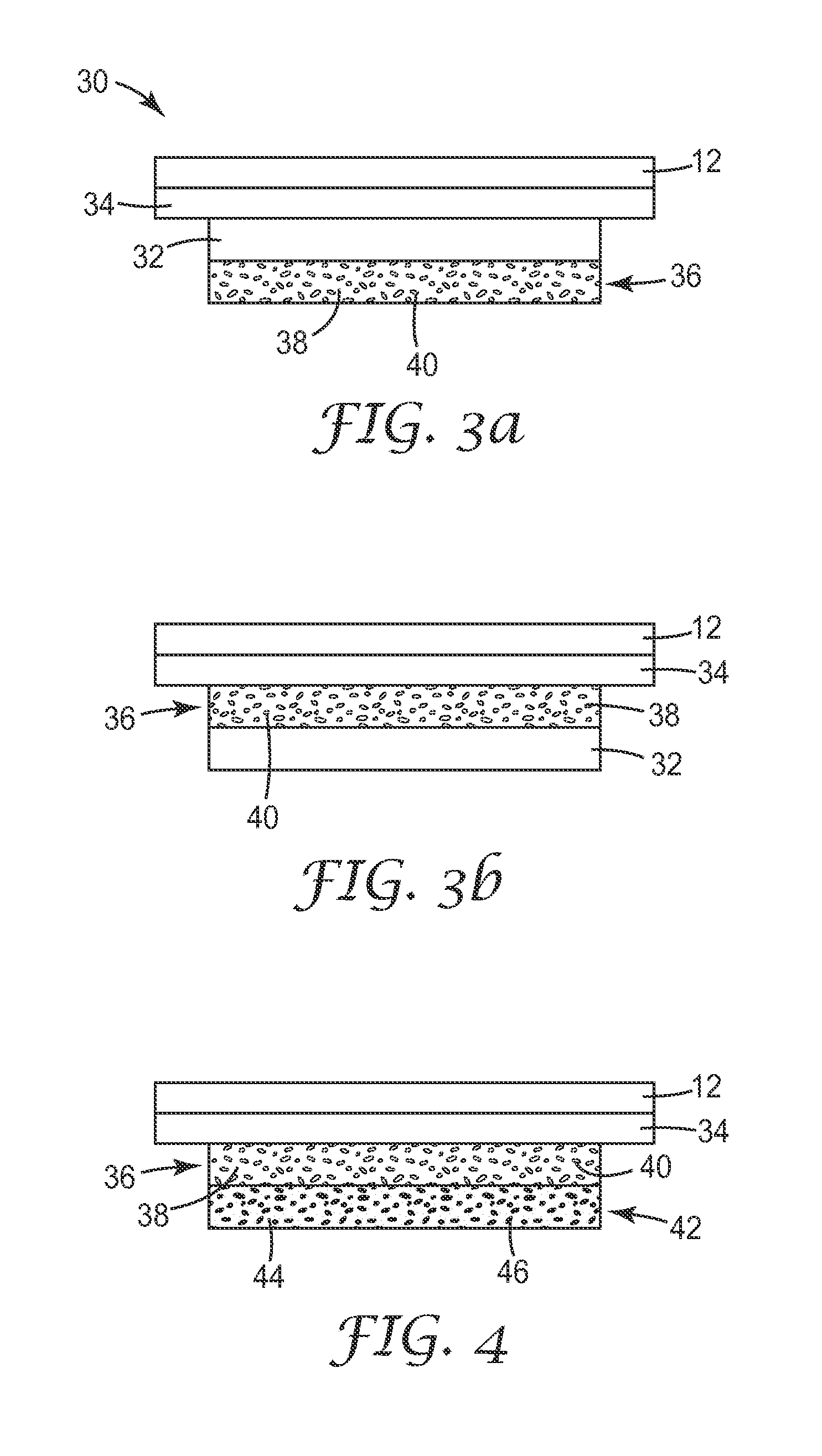Medical articles and methods of making using miscible composition
a composition and composition technology, applied in the field of medical articles, can solve the problems of high moisture transmission rate, complicated methods and equipment used to pattern coat adhesives, and increase the cost of edge lift, so as to improve moisture vapor transmission and improve the effect of mvtr and high mvtr
- Summary
- Abstract
- Description
- Claims
- Application Information
AI Technical Summary
Benefits of technology
Problems solved by technology
Method used
Image
Examples
example 5
The non-woven from Example 1 was saturated with a 2% (w / w) aqueous solution of methyl diethanolamine (MDEA), and then dried in an oven at 75° C. for 30 minutes. The coating weight of MDEA on the non-woven was 6 g / m2. This coated non-woven was then laminated by hand to the adhesive side of a 3M TEGADERM 9548HP dressing. The samples were tested approximately nine days after the lamination step. The average upright MVTR and inverted MVTR values of four test specimens were 2160+ / −80 g / m2 / 24 hours and 19800+ / −940 g / m2 / 24 hours, respectively.
example 8
The samples were prepared in a similar manner to Example 7, except that the non-woven was saturated with an aqueous solution comprised of 10% (w / w) glycerol and 2.4% (w / w) sodium carbonate monohydrate prior to drying it in the oven. The coating weight of the combined MVTR-modifying materials on the non-woven was 60 g / m2. The average upright MVTR and inverted MVTR values of five test specimens were 2440+ / −140 g / m2 / 24 hours and 19000+ / −900 g / m2 / 24 hours, respectively.
example 15
This sample was prepared in a similar manner to Example 14 except the adhesive on liner was treated with droplets of an aqueous solution comprised of 4.6% (w / w) sodium carbonate monohydrate, 7.4% glycerol, and 7.4% ethanol(AAPER Alcohol and Chemcial Co., Shelbyville, KY) via a syringe prior to the drying step. Each droplet weighed approximately 20 mg. The average upright MVTR and inverted MVTR values of five test specimens were 1880+ / −140 g / m2 / 24 hours and 20900+ / −3400 g / m2 / 24 hours, respectively. The average adhesion to steel of 2.54 cm wide samples was measured to be 170+ / −9 g / cm.
PUM
| Property | Measurement | Unit |
|---|---|---|
| thick×2 | aaaaa | aaaaa |
| moisture vapor transmission rate | aaaaa | aaaaa |
| moisture permeability | aaaaa | aaaaa |
Abstract
Description
Claims
Application Information
 Login to View More
Login to View More - R&D
- Intellectual Property
- Life Sciences
- Materials
- Tech Scout
- Unparalleled Data Quality
- Higher Quality Content
- 60% Fewer Hallucinations
Browse by: Latest US Patents, China's latest patents, Technical Efficacy Thesaurus, Application Domain, Technology Topic, Popular Technical Reports.
© 2025 PatSnap. All rights reserved.Legal|Privacy policy|Modern Slavery Act Transparency Statement|Sitemap|About US| Contact US: help@patsnap.com



